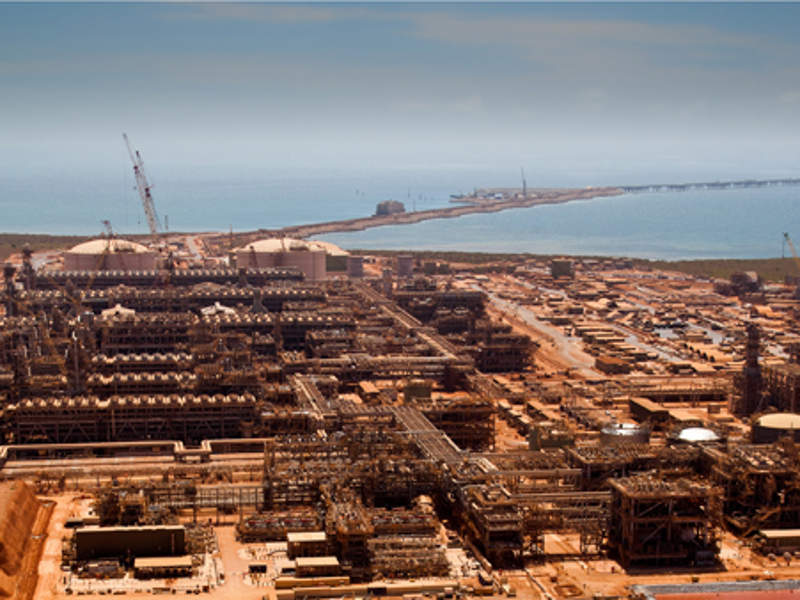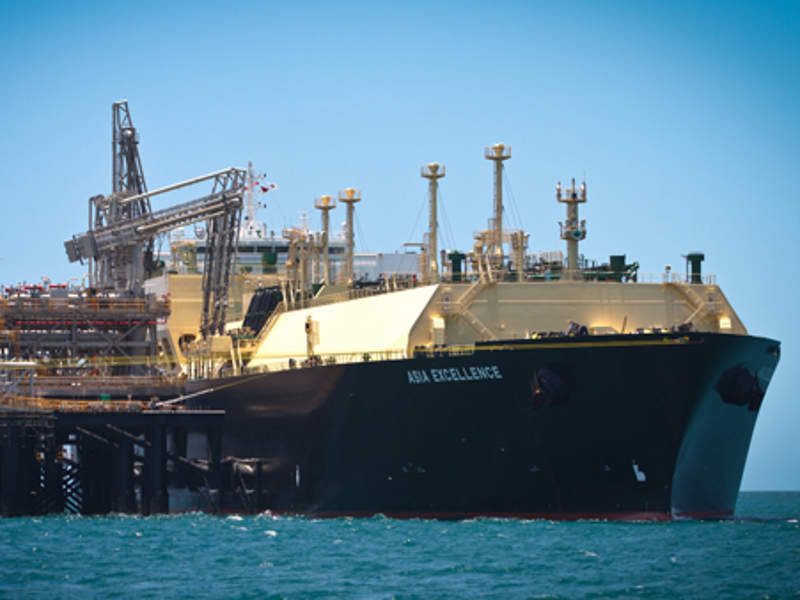Gorgon LNG project, located on the Barrow Island, approximately 60km offshore Western Australia, has been in operation since March 2016.
The $54bn integrated Gorgon liquefied natural gas (LNG) project involves the development of Gorgon and Jansz-Io offshore gas fields in the Greater Gorgon area in the Barrow sub-basin of the Carnarvon Basin, and a three-train LNG plant and a domestic gas plant on the Barrow Island.
Operated by Chevron, the Gorgon LNG facility has the capacity to produce 15.6 million tonnes (Mt) of LNG a year, over its estimated operational life of 40 years.
The Gorgon project is currently undergoing the second phase offshore development involving additional production wells, subsea structures and offshore pipelines, to maintain the feed gas flow to the LNG processing facility.
Project Gallery
The Gorgon LNG project expansion is expected to be completed in 2023.
Gorgon LNG project partners
Chevron holds owns a controlling 47.3% interest in the project, while ExxonMobil and Shell hold 25% stake each. The remaining interests are held by Osaka Gas (1.25%), Tokyo Gas (1%), and JERA (0.417%).
Gorgon and Jansz-Io offshore gas field development details
Discovered in 1980, the Gorgon gas field is located approximately 65km to the west of Barrow Island, in 200m of water.
The Jansz-Io gas field was discovered in 2000 and is located 130km northwest of Barrow Island, in 1,350m of water.
Both the fields are located in the in the Greater Gorgon area, which is estimated to contain more than 40 trillion cubic feet of gas, making it one of the biggest gas reserves in Australia.
As part of the Gorgon phase one development, the Gorgon gas field was developed with eight production wells and the Jansz-Io field was developed with ten production wells.
The gas produced from the wells is gathered at subsea structures installed at each field and transported through feed-gas pipelines to Barrow Island.
Gorgon LNG project production
The Gorgon LNG project received environmental permit in August 2009 and construction on the project started in December 2009.
LNG production started with the commissioning of two LNG trains in March 2016, while domestic gas supply started in December 2016. The third LNG train was brought into operation in March 2017.
LNG export agreements for Gorgon project
LNG from Gorgon is sold to customers in India, Japan, China and South Korea, under long-term export sale agreements secured by the three major shareholders of the project.
Chevron Australia signed sale and purchase agreements (SPA) with Osaka Gas, Tokyo Gas, Chubu Electric Power, GS Caltex, Korea Gas Corporation, Nippon Oil Corporation and Kyushu Electric.
Shell sells its share of gas to PetroChina International and BP Singapore, while Mobil Australia Resources has signed long-term SPAs with Petronet LNG and PetroChina International.
Contractors involved with offshore development in Gorgon stage one
Gorgon Upstream Joint Venture (GUJV), a joint venture of Wood Group and Technip Oceania was the front-end engineering and design (FEED) as well as the engineering, procurement and construction management (EPCM) contractor for the Gorgon offshore development project.
GE supplied the subsea trees, subsea wellhead systems, pipeline end terminations (PLETs), manifolds, pig launchers / receivers and umbilical distribution assemblies, spools and multi-bore well jumpers, and production control systems for the Gorgon offshore development.
McDermott was responsible for the fabrication and assembly of manifolds, control distribution units (CDU), pipeline end terminations (PLETS) and pipeline termination structure (PTS). The work scope also included 63 jumpers and spools.
Steel tube umbilicals and monoethylene glycol (MEG) system were supplied by Aker Solutions.
Subsea control fluids for the project were supplied by MacDermid Offshore Solutions.
Subsea 7 was contracted to perform heavy lifts and tie-ins using its heavy lift vessel Sapura 3000.
Allseas was engaged for certain subsea installation works including the trenching and laying of infield pipelines.
Contractors involved with the Gorgon LNG project
KJVG (Kellogg Joint Venture Group), a joint venture of KBR, JGC, Clough and Hatch, was awarded the $2.7bn engineering, procurement, and construction management (EPCM) contract for the Gorgon LNG facility in September 2009.
Hyundai Heavy Industries was awarded a $1bn contract in October 2009 to fabricate 51 liquefaction train modules for the Gorgon LNG project.
CB&I Kentz joint venture (CB&I 65% and Kentz 35%) was awarded a contract worth $2.2bn for the mechanical, electrical and instrumentation work for the natural gas processing facility on Barrow Island, in July 2011.
McDermott provided structural, mechanical, piping, electrical, instrumentation and commissioning support for the construction of three LNG trains and was also responsible for the engineering, procurement, fabrication and construction of LNG storage tanks.
ABLE Instruments & Controls was contracted in July 2011 to supply flow metres to the LNG processing facility.
GE Oil & Gas provided compression trains, gas turbines as well as carbon dioxide reinjection equipment for the LNG plant. It was also awarded a 22-year maintenance contract worth $600m, in July 2012, for the compression trains, power generation and associated equipment at the Gorgon LNG plant.
McDermott was awarded the contract for mechanical, piping, electrical, instrumentation and commissioning of three LNG trains at the facility in 2009.
A consortium of Leighton and Saipem was awarded a $900m contract in November 2009 to develop the LNG jetty and other marine structures for the Gorgon project.


